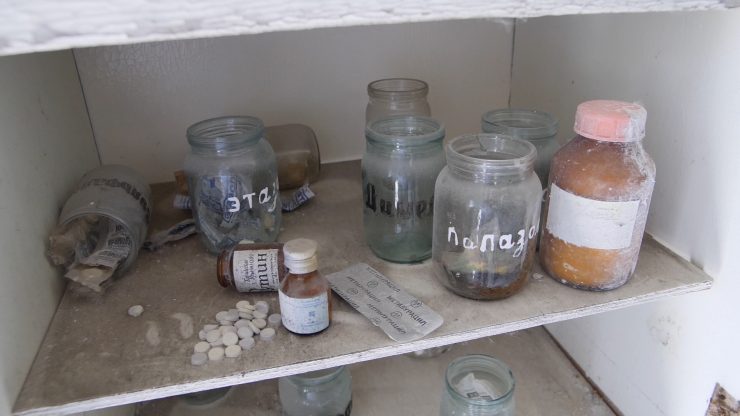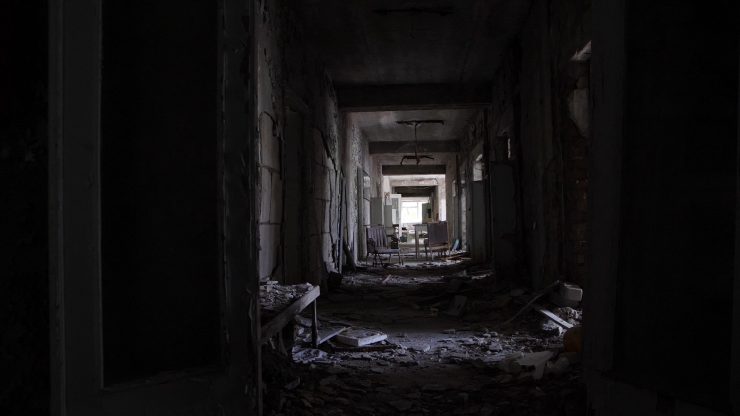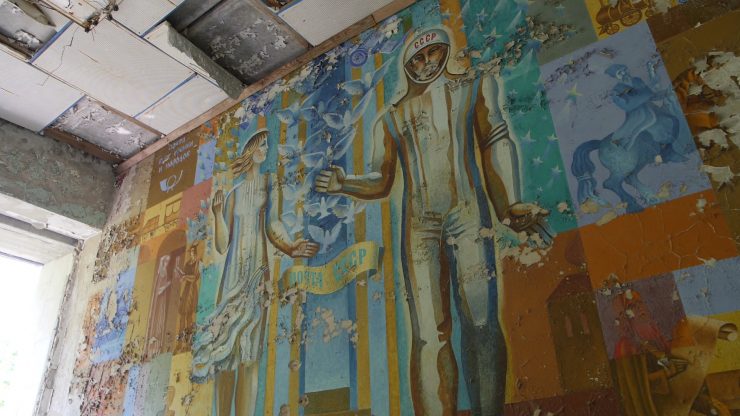Merrily waving goodbye to Donald Trump after his UK visit, I heard we had been commissioned to produce a one hour ‘Real Chernobyl’ documentary. The brief to find and speak to key witnesses and survivors of the nuclear disaster.
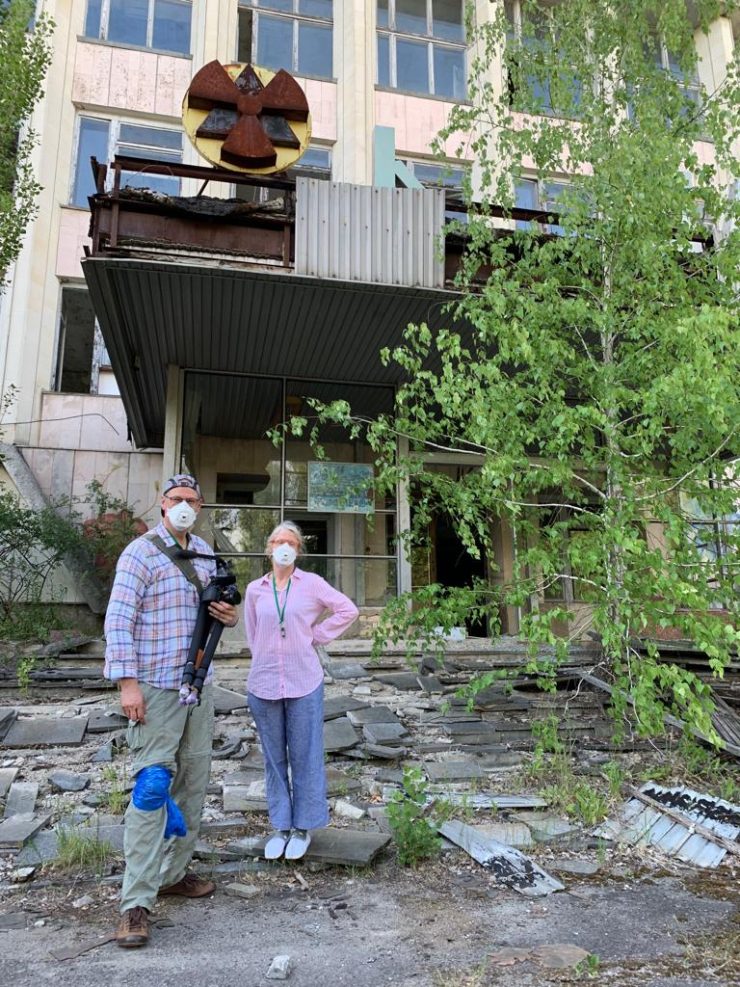
Craig Mazin’s ‘Chernobyl’ drama series was a blockbuster success for Sky Atlantic and HBO. It seemed everyone knew of the 1986 Chernobyl nuclear disaster and yet few knew the Chernobyl story. Unlike the drama series, which was filmed at an identical nuclear reactor in Lithuania, we would film in the Ukraine at the actual Chernobyl site.
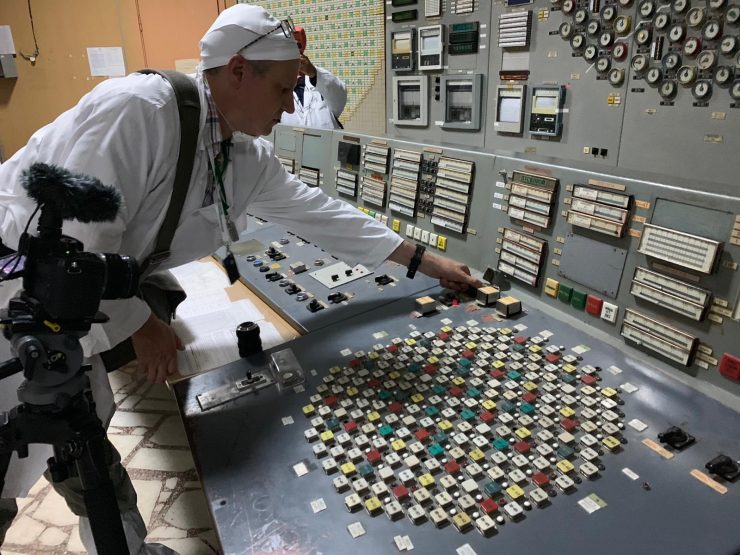
Exposure = Intensity x Duration. The Radiation exposure equation sounds familiar for photographers. The longer you hang around and the higher the intensity of radiation, the greater your exposure.
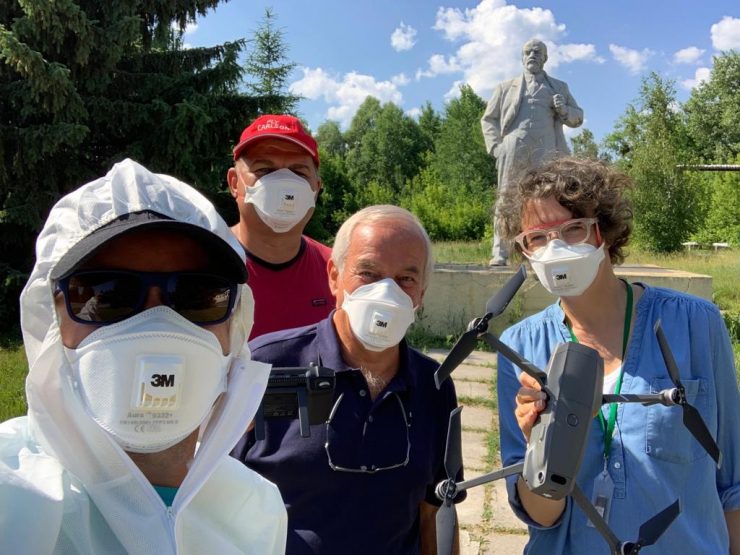
I weighed up the risk. Sky sent the wonderful Dave Butler a CBRN (Chemical, Biological, Radiological and Nuclear) safety expert to join us in Chernobyl. Dave monitored our radiation exposure with a Geiger Counter. His meter showed hotspots in the zone, but not at levels dangerous in short exposure.
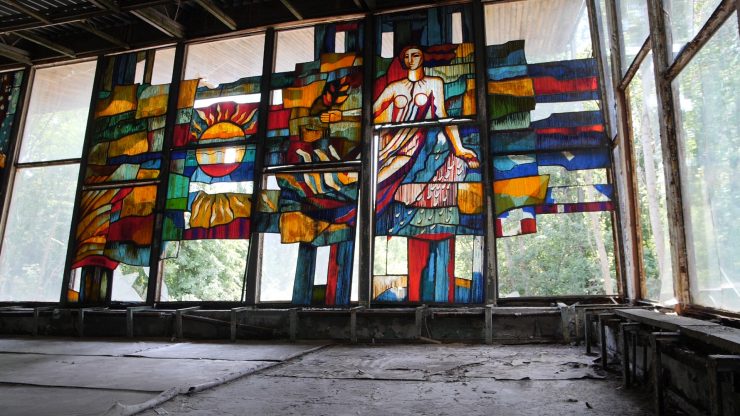
Only once did his readings rise higher and that was beside a building with the most beautiful stained glass window in the abandoned town of Pripyat. We kept clear and moved on. Background readings were low, but I spent six days inside the zone. Mostly hanging about waiting for permits to be approved. We wore masks to reduce our greatest danger, that of ingesting contaminated dust kicked up from the parched earth. We were also told of a photographer who constantly knelt whilst shooting and ended up having his radioactive trousers cut-off.
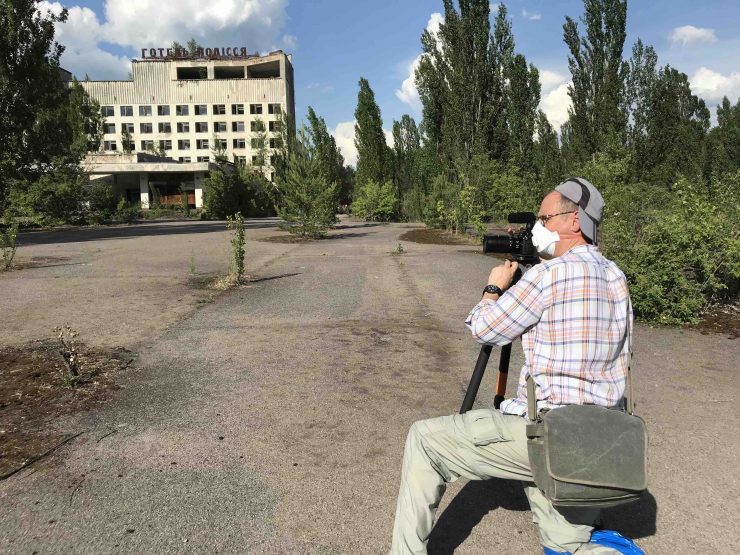
So I wore my mask, sweating in the baking sun and juggled kit from my shoulder bag. Our instructions were to put nothing down. At times I think the tourists, who after seeing the TV series are flocking to join Chernobyl tours, were a little concerned to see us wearing masks where they were not.
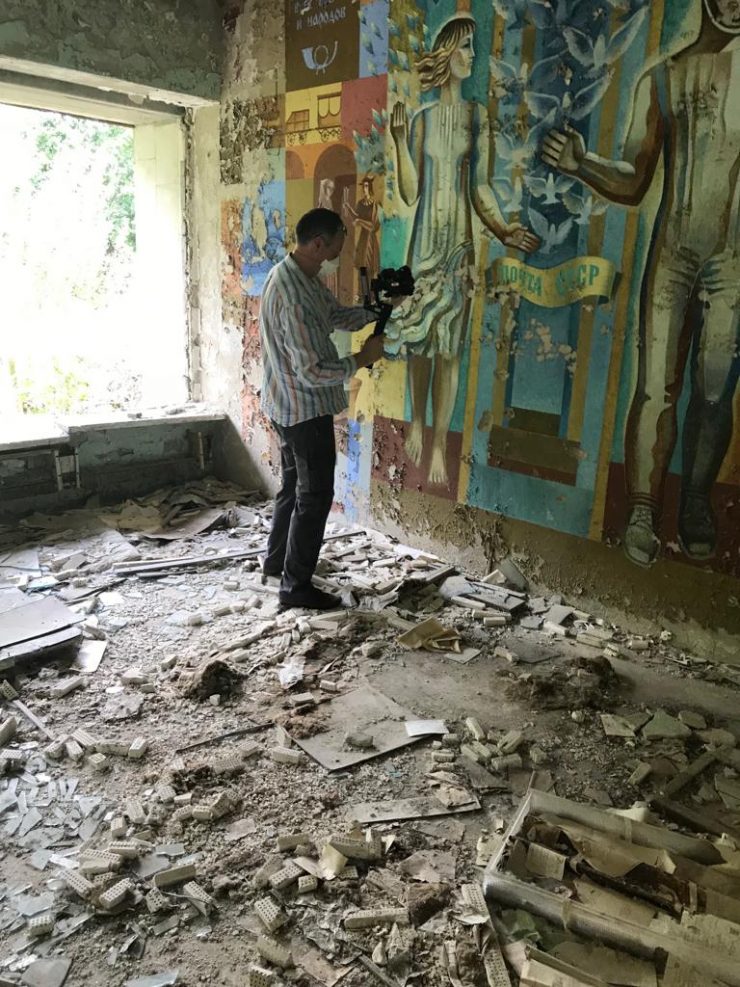
I am a DSLR fan for shooting video. I have used them for ten years across Asia, whether sneaking around Burma, avoiding the authorities in Kashgar, Xinjiang or the Tibetan regions of China. In fact I use them everyday. I’m based back in London now and have used my Lumix GH cameras in forty new countries in three years, from Colombia to Kazakhstan from Iceland to Iran. Every time the M43 form factor is gold.
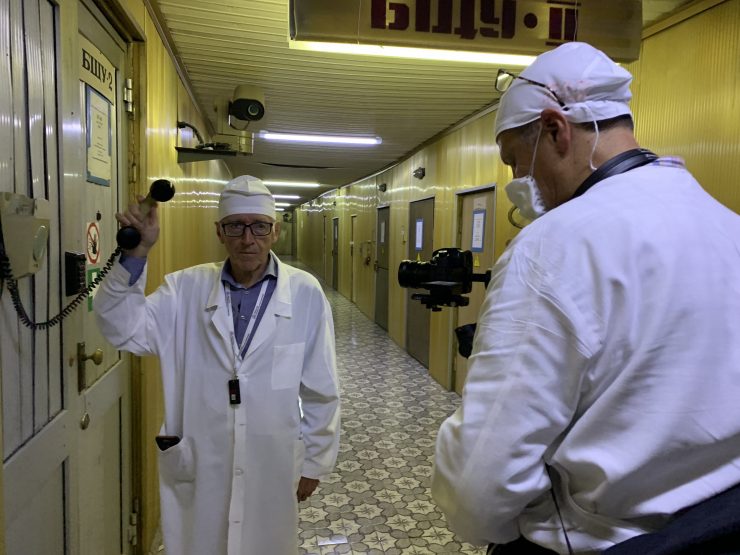
Katastrofa! The 1986 Chernobyl disaster was catastrophic and ‘katastrofa’ was a word I soon started picking up from our interviews with survivors. It would have been even more catastrophic without the selfless actions of heroic workers, scientists, soldiers and all those drafted as ‘bio robots’ and ‘liquidators’. A Soviet mission to mobilise the masses to seal and clean up the exposed reactor and surrounding radioactive contamination. Our contributors were enthralling, chilling testimonies confirming the events of history and interestingly the tone of the drama series.
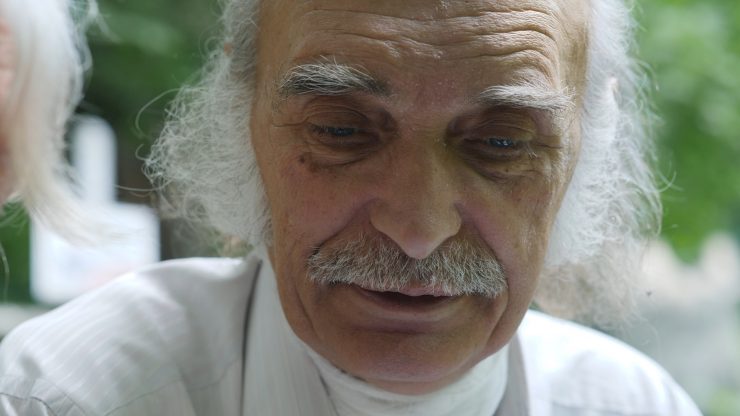
Viktor Kripchenko was one of the Ukrainian cameraman who in the aftermath of the disaster in 1986 went to Chernobyl with a 35mm film camera to record a documentary.
I felt an instant bond with Viktor. He had recently been diagnosed with throat cancer and the surgical gauze dressing was still on his neck. I was in awe of Viktor, he was upright, proud and charming. Victor had not shared his story before, but decided now was the time. I knew after recent surgery he couldn’t speak. How was I to convey his story?
In reality, it just happened – Viktor’s eyes said plenty and he wrote swiftly and eloquently on a notepad as I filmed. I had an idea of the significance of his words, but later there impact hit home.
Victor sat with Valeria at the graveside of film director Volodya Shevchenko. Volodya had been Viktor’s director on the Chernobyl documentary and was Valeria’s husband. Volodya died from the effects of radiation in 1987. Valeria describing with her eyes closed how Volodya’s lungs had ‘melted’ on the operating table.
In the cemetery, our small group shared a language of film making. Viktor watched me go about shooting the interview, occasionally nodding approval. He pointed out the shot through the cross, which I duly recorded. He liked my Voightlander 17.5mm, it’s a tactile manual lens that he picked up and weighed in his hand.
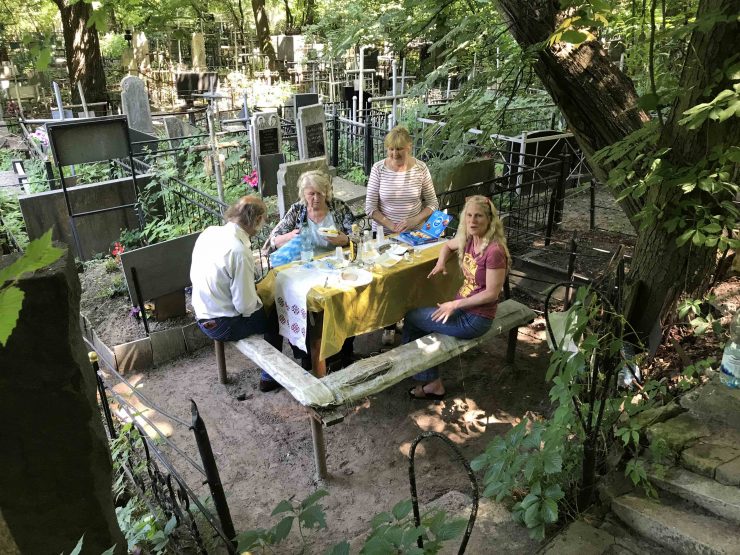
As is the custom in the Ukraine, Viktor and Valeria brought a picnic to share with us at Volodya’s graveside. It was perfectly peaceful and felt just right. Some things you must never lose sight of, even amid an impossibly tight shooting schedule.
When we finished our film we sent links for Viktor to view. I waited anxiously for his approval. Viktor said he was pleased with part one, but then went into hospital to start his chemo therapy. I was left hoping his treatment was going well and that Viktor would tell me what he thought of his appearance in part three. I would have to wait.
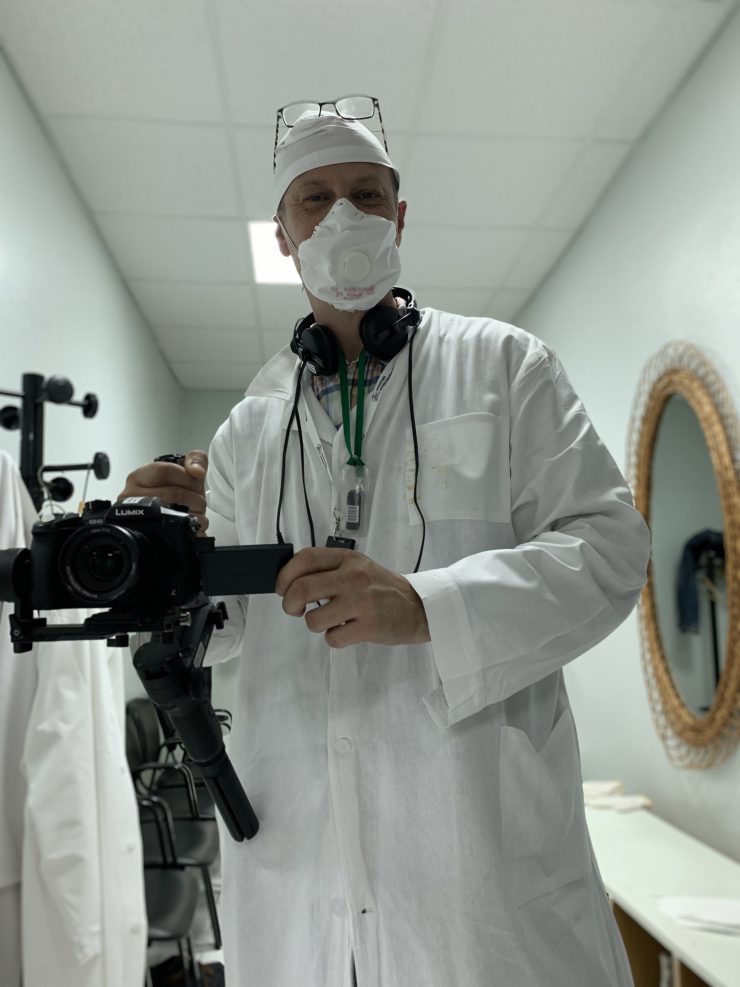
Micro four thirds truly is the DSLR video king. I know what bigger sensors and cameras can do. I shot the Queen’s Christmas Message with a fully rigged Sony Venice and lenses I could barely lift.
Before travelling to Ukraine I was covering anti Trump rallies in London. I saw several camera people shooting with large sensor cameras in the rain. Extraordinary rigs with wires, brackets, batteries, monitors. I applaud the users determination, but fear for their sanity, it’s not for me.
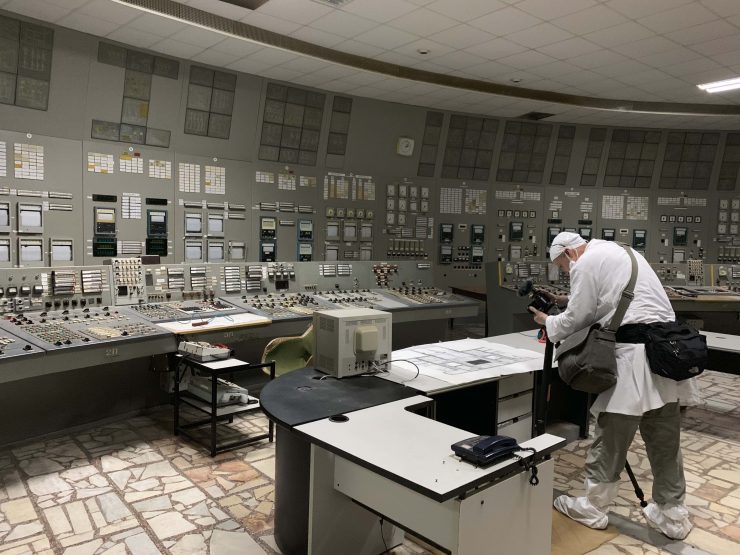
My ThinkTank Retrospective 10 shoulder bag carries two Lumix GH bodies and up to nine lenses. Plus XLR sound box and top microphone. The shoulder bag gives quick lens changes and my regular backpack ‘run bag’ stays packed the same-way no matter which camera I am using.
Which leads me to the Panny Full frame S1 (H) system. Why? I don’t get it. The future of photography is in a phone and not building bodies and lenses you need a wheelbarrow to transport.
Fast lenses on M43 easily produce a shallow depth of field for video with just one eye of my interviewee in focus. I rarely want that, but mostly like do want some context to the interview background as well as a fighting chance of keeping focus.
Panny are the masters of M43 video and have an opportunity with the 6th generation GH6 to consolidate that position. Sure I want the low light sensitivity of the GH5S and the image stabilizing of the GH5 in the same body. Who tells Panny filmmakers don’t want in-body IS?
I want video orientated lenses and face recognition autofocus that works. Why has it taken so long to come up with click-less smooth aperture lenses?
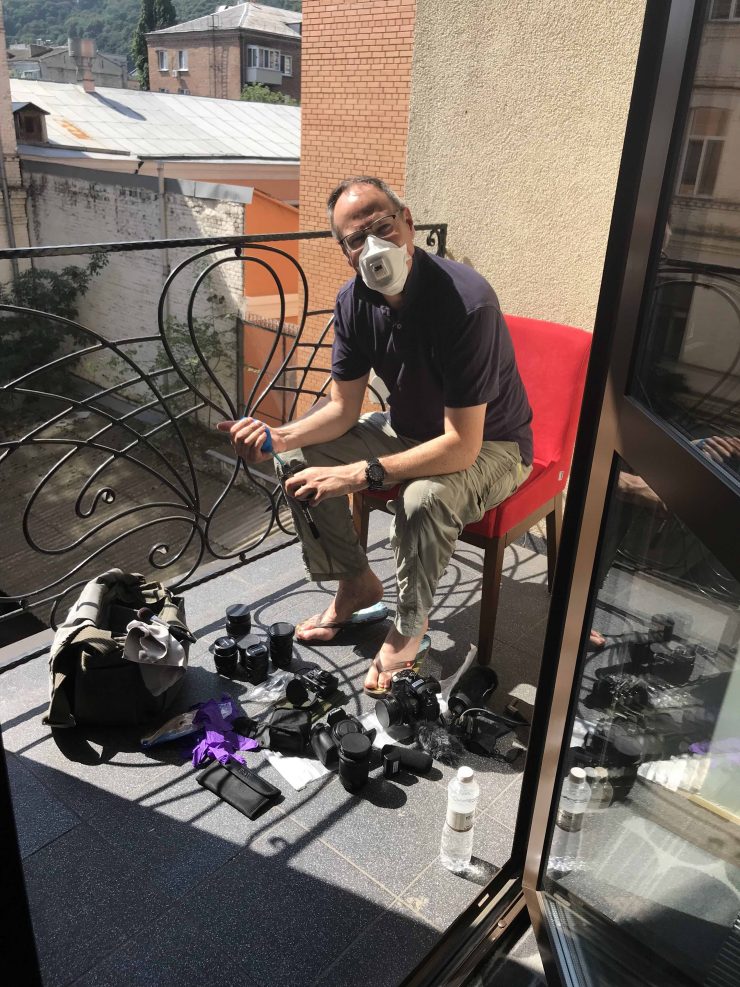
Yes, I’d like my XLR connector interface underneath not stuck on the hot shoe like Sony. Yes, I want inbuilt Variable ND. But, the compact M43 size is perfect. It has proven on countless shoots to be so disarming. In an age claiming fake news, I have to say I get nearer to the truth with this kit every time. Maybe there is an inverse relationship between the size of the kit and the truth?
Even recently at an Extinction Rebellion Demo in London nothing was happening until I arrived carrying a big camera that day. Suddenly I was back in the old news format. Everyone knew TV was here and I recorded what I suspect would not have happened if I hadn’t turned up. By comparison the small camera goes unnoticed, recording people speaking from the heart and not what they think the TV camera should broadcast.
Going forward I am interested in the new Leica 10-25mm F1.7, but then again my faster manual primes give great close focusing.
Light and Motion Stella lights are superb and I’ve been using them since they produced 5.6K versions. I have the 10000, 5000 and 2000. All used on this project.
The 5000 with built-in battery is the quickest to deploy and easiest to have in your backpack. I’ve used it in the rain but never tested it’s 100-meter waterproof rating.
The attaching modifiers for the Stella lamps are effective but poorly designed. Barn doors don’t even fold flat. The natty glow bulb is loose in its mount. Plus the lamps all run off different connectors. Irritating, but the lights are tremendously powerful. The 10000 inside a bounce brolly is beautiful.
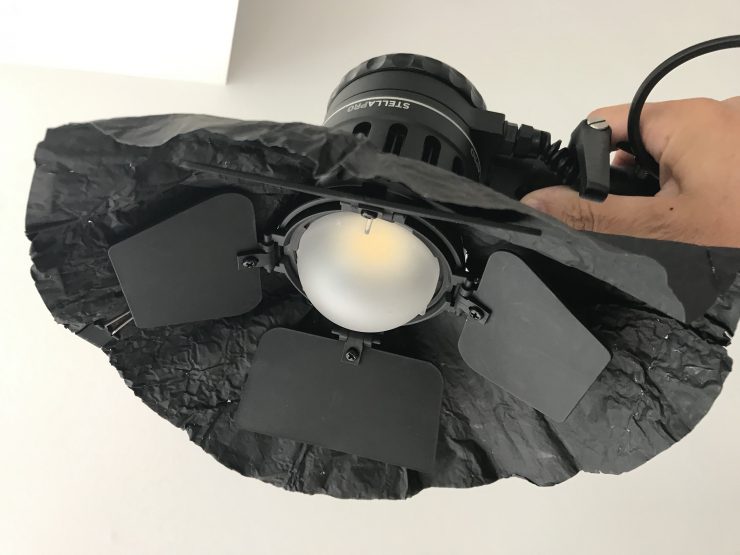
In this project, I dropped all my lights over the top. Either with the Stella 10000 glow bulb and a collar of black wrap to shade the walls, which I like for being quite harsh and gritty. I also used the Aladdin 1×1 in a snap bag lantern for a warmer soft top light.
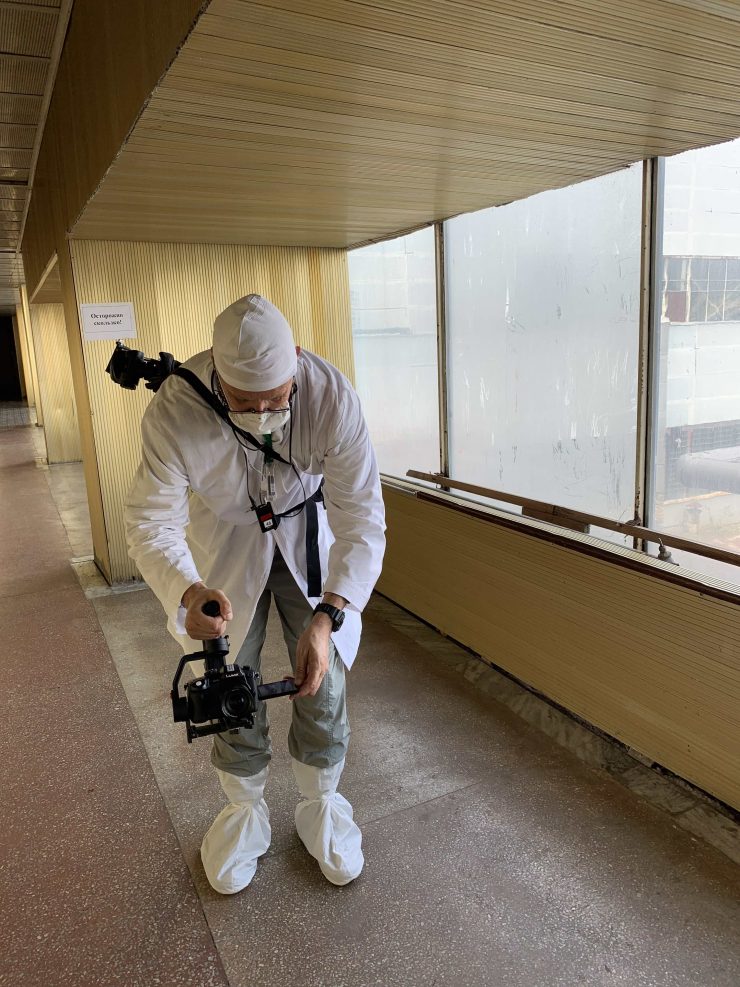
WEEBILL LAB gimbal: I only have one set of batteries and could have done with another. The batteries run down quicker than expected. The weebill lab fits my compact kit perfectly. No point in having kit if it’s too heavy to carry with you. The weebill lab has the footprint of an A4 page and fits in a padded wash bag. I’m engineering the plate to work with my QR plates and I clamp a small counterbalance on the gimbal arm with the GH5 screen flipped out.
I use only Sennheiser AVX Bluetooth links for all my mics. Either MKE2 Gold lapels or Sony AA powered shotgun. I did use a Schoeps MK41 mic to record atmosphere. The sound of silence was important in this story.
I can mount the tiny right-angle AVX receivers onto the Weebill lab handle with an extended hot-shoe and a 30cm splitter cable goes directly into the camera minijack mic socket.
It’s easy and lightweight. The sole surviving fireman Anatoliy Naydyuk and Oleg Bryukhanov the plant director’s son interviews were both shot on the gimbal and lasted twenty-five minutes each. Do that with a Ronin S and any heavier camera and you are the bodybuilder I’m not.
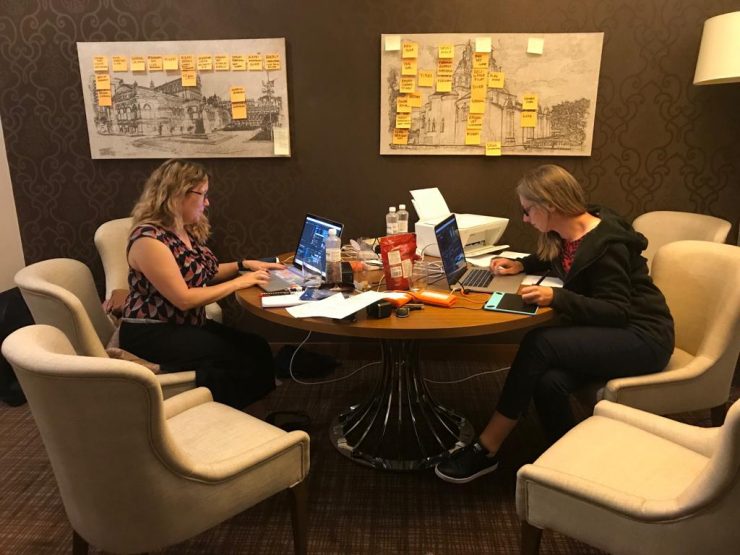
To complete the documentary two editors flew from London to Kiev. Katie Child and Emily Dumas weaved magic on two MacBook Pros with extraordinary archive uncovered by Joanna Ludwisiak our archivist in London.
The haunting and fitting soundtrack was from Pripyat Pianos. An amazing project to record original sound from instruments abandoned 33 years ago in the exclusion zone and bring their voices back to life.
Translations of hours of Russian and Ukrainian interviews had to be checked and double checked. All subtitles added on location in Kiev. Diana Magnay had joined us from Sky’s Moscow bureau. Diana was the ideal person to give the script context and her narrative tone was perfection.
No grade – no time for a grade, so what you see is what I shot with the GH5 10-bit Natural profile.
We allowed one day to send master material from Kiev. We had around 200GB of clean and mixed material and spent all of the day of transmission in an internet cafe anxiously watching blue progress lines creep across Dropbox screens.
The Real Chernobyl was broadcast that night and there were horseradish vodkas all round. The key to a compelling film – compelling contributors, which Julie Karmo, producer/director, and Steph Degroote our director focused on hearing. Why the rush so long after the disaster? Sometimes things are just of the moment. We heard amazing voices speaking freely and from the heart. Some had waited 33 years to tell their story.
And my biggest relief, Viktor came back to me this week. He has started his chemo but had time to watch all three parts of our film. Perhaps with predictable humility, Viktor thanked us all and said he was “truly grateful.”

